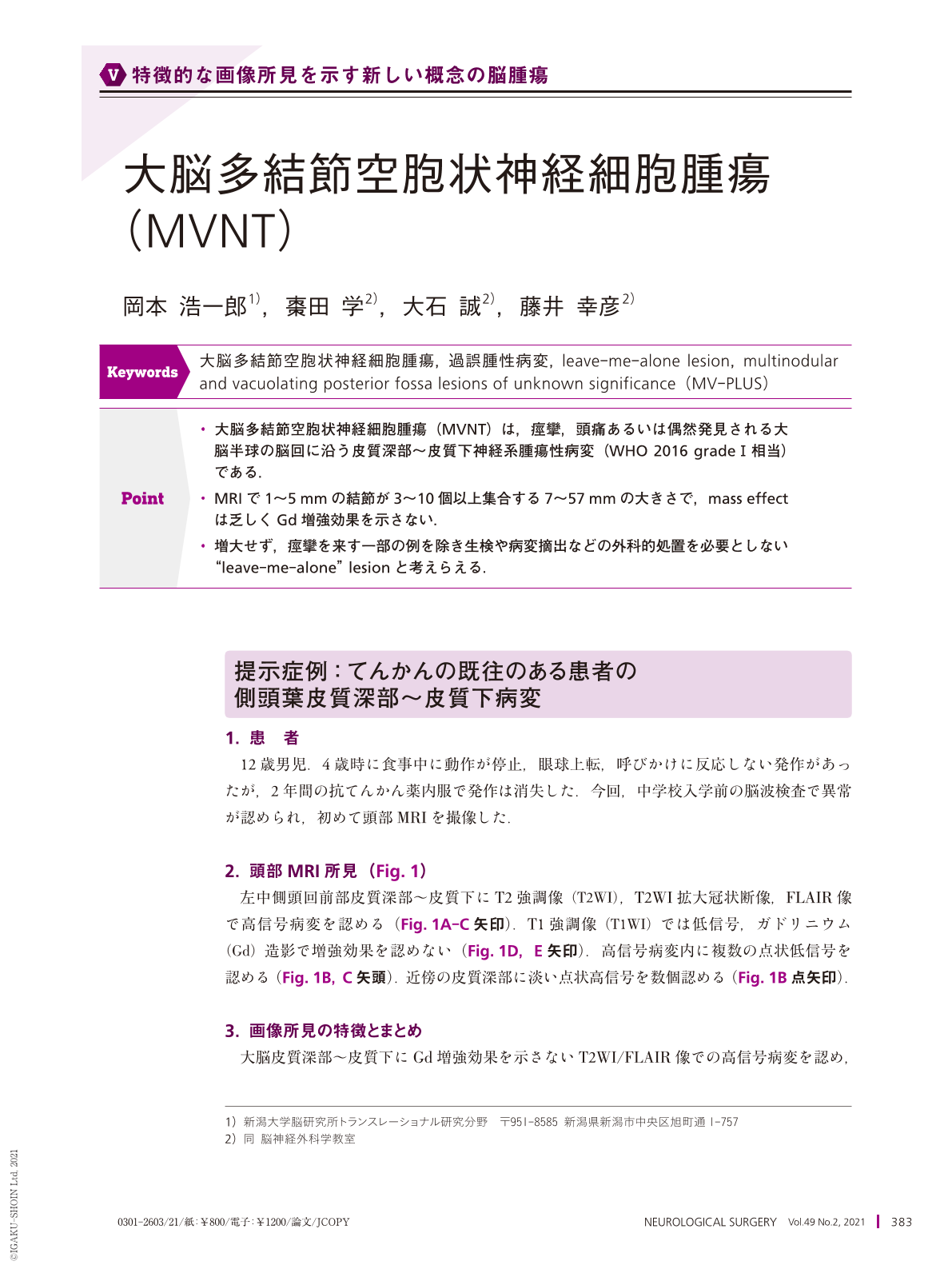Japanese
English
- 有料閲覧
- Abstract 文献概要
- 1ページ目 Look Inside
- 参考文献 Reference
Point
・大脳多結節空胞状神経細胞腫瘍(MVNT)は,痙攣,頭痛あるいは偶然発見される大脳半球の脳回に沿う皮質深部〜皮質下神経系腫瘍性病変(WHO 2016 gradeⅠ相当)である.
・MRIで1〜5 mmの結節が3〜10個以上集合する7〜57 mmの大きさで,mass effectは乏しくGd増強効果を示さない.
・増大せず,痙攣を来す一部の例を除き生検や病変摘出などの外科的処置を必要としない“leave-me-alone” lesionと考えらえる.
Multinodular and vacuolating neuronal tumors of the cerebrum(MVNTs)are rare brain tumors that were described first in 2013. MVNTs have been added to the World Health Organization Classification of Tumors of the Central Nervous System in 2016(2016WHO), although an MVNT is a clinical-pathological lesion with uncertain class assignment. It remains unclear whether MVNTs should be considered a true neoplasm or malformative lesion. Their prevalence and pathophysiology are unknown. MVNTs typically occur in adults, predominantly in the cerebral subcortical region, and are most frequently associated with seizures or seizure equivalents. MVMTs can also present incidentally without seizures. MVNTs have been reported to show highly suggestive imaging features, especially on MRI scans. MVNTs consist of small T2 and T2-FLAIR hyperintense nodules in subcortical and juxtacortical areas with rare or no post-contrast enhancement. Most MVNTs reported in the literature involve the supratentorial part of the brain. Recently, lesions exhibiting a remarkably similar pattern of imaging findings were described in the posterior fossa, which are referred to as multinodular and vacuolating posterior fossa of unknown significance(MV-PLUS). Both MVNT and MV-PLUS are considered “leave-me-alone” lesions because of the absence of malignancy criteria and the lack of evolutivity on follow-up MRI scans.

Copyright © 2021, Igaku-Shoin Ltd. All rights reserved.


